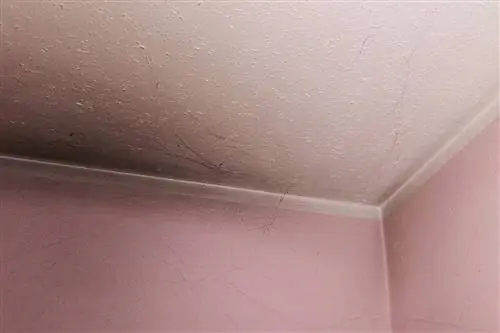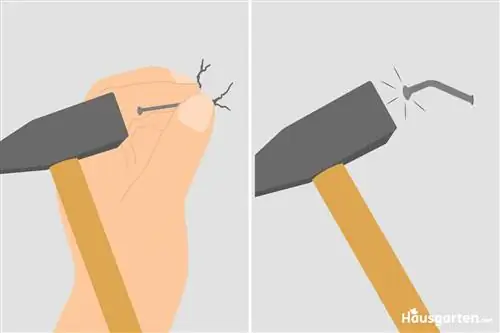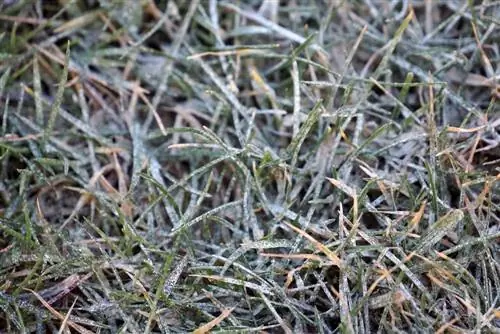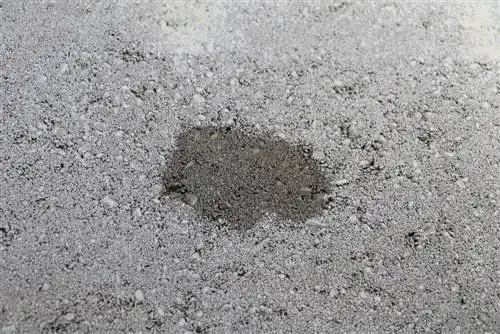- Author admin [email protected].
- Public 2023-12-17 03:39.
- Last modified 2025-01-24 12:45.
Fogging is still a foreign concept to many people, but black dust on walls, ceilings and carpets has been a widespread problem since the 1990s. We provide all the important information about this vexing issue, from its origins to how it is combated.
What is fogging?
The term fogging describes the deposit of black dust as an oily, greasy or sticky residue on living surfaces. The black dust appears to arise from a combination of volatilizing plasticizers and dust and soot. However, the exact processes are still unclear.
However, the factors that promote the formation of fogging have already been investigated.
Favoring factors
The term fogging only came into being in the mid-1990s because black dust suddenly became more common. It is found largely in new buildings and after renovation work, but is not only limited to this.
As the phenomenon became more common, it became increasingly studied. The same factors kept coming up again and again. These are:
- Occurrence during the heating season
- Use of plasticizers
- increased dust volume
- lack of or insufficient ventilation
- low humidity
- frequent use of candles, incense sticks or oil lamps
- stronger sealing of living spaces
- increased use of plastics
Appearance
The black dust can be found on ceilings and walls, home textiles and plastic surfaces. As a rule, fogging occurs with the onset of the heating season. Black stripes are typical and even appear on the carpet.
When there is fogging on walls or ceilings, it is often a shock because at first glance the black dust resembles mold. However, there are some ways to differentiate between the two phenomena.
- Mold smells musty, fogging doesn't smell
- Black dust appears suddenly, mold spreads slowly
- Fogging occurs when humidity is low, mold occurs when humidity is high
- Black dust is sticky and greasy
Tip:
If you are unsure whether it is fogging, the area can be wiped with a clean and dry cloth. Black dust causes greasy streaks to form.
Remove
If fogging has already occurred, it must be thoroughly removed. This varies depending on the material in question, both in terms of the procedure and the chances of success.
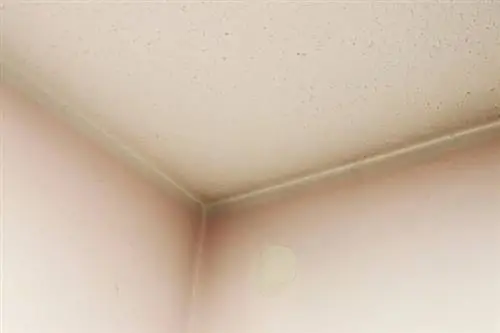
Home textiles
Removing black dust is comparatively easy with washable home textiles, such as curtains, blankets or pillowcases. As a rule, it is sufficient to use regular detergent. If black discoloration still appears, stain removers against grease and soot can be used.
If the black dust appears on carpets or upholstered furniture, the effort is greater. Upholstery cleaners and, if necessary, so-called spray extraction devices must be used here. In the case of carpets, complete replacement may be necessary if the underside contains plasticizers.
Plastics
If black dust accumulates on plastic furniture or other plastic elements, cleaning is usually very easy. Normally warm water, a sponge and degreasing detergent are sufficient for removal. If this is not the case, special plastic cleaners are available.
Tip:
Fogging can also occur in the refrigerator or other cupboards. Thorough wiping is usually enough. The use of special kitchen cleaners is recommended, especially in the refrigerator or when in contact with food.
Walls
Fogging is often first noticed on walls and ceilings. The usually significant temperature differences are responsible for this. Since these are greatest between external walls and heated interior rooms in winter, the black dust settles primarily in these areas.
Since cleaning requires degreasing detergent and warm water, wallpaper can be damaged and paint can be wiped off.
An alternative to this is painting over. It is advisable to first apply a primer and then paint over it while it is still wet.
Prevent fogging
Whether black dust has already settled or fogging needs to be prevented, some simple measures can prevent the deposits.
Ventilation and humidity
Black dust deposits mainly occur when there is not enough ventilation. Even in winter, you should ventilate the room several times a day. In order not to lower the room temperature too much, two to three minutes are sufficient.
This measure can help prevent the humidity from dropping too much. However, due to the dry heating air, it is still not enough. It also makes sense to bring in houseplants and use humidifiers or air washers.
Candles etc

Candles, oil lamps, cigarettes or the table fireplace - black dust can be encouraged by soot-forming influences. If you don't want to do without atmospheric lighting, you should pay more attention to regular and sufficient ventilation.
Renovation work
Fresh paint or new flooring - Fogging often occurs after renovations. This makes it easy to prevent black dust when selecting the means and materials used.
Products without plasticizers, preservatives and other non-volatile compounds are optimal. Natural materials should always be preferred.
The timing of the renovation also plays a crucial role. If carried out in spring or summer, potentially fogging substances can evaporate before the heating period. Since the rooms are ventilated more frequently and for longer periods of time in the warmer seasons, the materials do not condense indoors.
Dust exposure and care
Both high levels of soot and dust as well as frequent and very intensive care of the apartment can promote fogging. At first glance, these conditions seem to be mutually exclusive.
However, in so-called “typical female households” the conditions can coincide. Because there are more home textiles and decorations in them. Cosmetics, candles, oil lamps, etc. are also used more frequently. This increases the amount of dust and fumes.
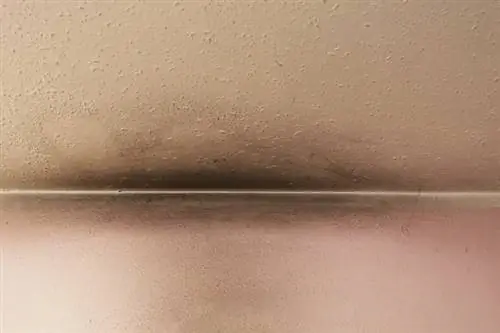
Intensive care and cleaning of an apartment or house is accompanied by cleaning agents that also release particles into the air. This makes adequate ventilation all the more important.
Frequently asked questions
Who pays for damage caused by fogging?
If the apartment is used properly and standard paint, wallpaper and floor coverings are used, the landlord can usually get the costs covered. This also applies if there are defects that lead to thermal bridges. However, the necessary legal steps can take a long time.
Is fogging harmful to he alth?
So far there is no evidence that fogging is harmful to he alth. However, it should be borne in mind that the visible deposits are only a fraction of the substances dissolved in the air. The black dust is therefore always a sign that increased ventilation should be carried out or that the air needs to be filtered.
How quickly can fogging occur?
Fogging can form within a few hours. However, it is often only noticeable after a few days or weeks and especially after being away or with the onset of the heating season.

